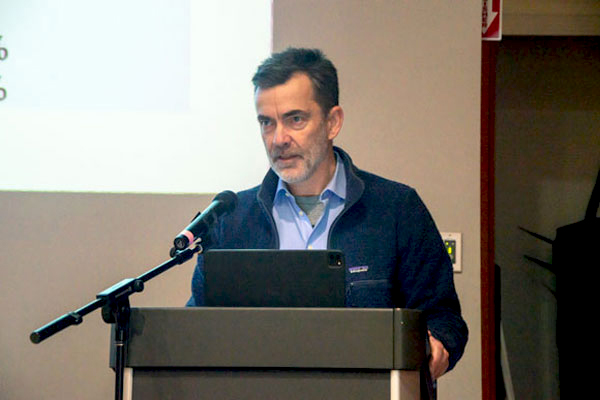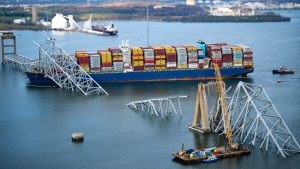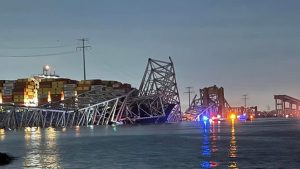According to a recent study, the British Columbia Construction Safety Association (BCCSA) claims the toxic drug crisis in the construction industry is not as bad as previously thought.
“The initial findings of the Construction Safety and Substance Use: Blueprint for Action study cast doubt on the apparent crisis that the researchers were asked to investigate,” said Mike McKenna, executive director of BCCSA, at an industry event unveiling the report on March 7.
The report, put together by Dr. Paul Farnan, Dr. Carson McPherson, Dr. Paul Sobey, Dr. Julian Somers and Akm Moniruzzaman from Simon Fraser University, worked with more than 650 informants in the sector to determine the prevalence and type of substance use.
Individuals interviewed for the study came from a range of locations, trades and age groups.
The study was generally focused around use of substances such as alcohol and illicit drugs at the workplace, with a secondary view being worker health in general and how it is impacted by substance use.
“The blueprint project found that cannabis and alcohol account for the vast majority of safety and health-related risks faced by workers in the B.C. construction sector,” reads the draft final report.
Resources over-allocated to fighting the opioid problem take away from helping more serious problems, such as alcohol and cannabis abuse, it reads.
What we found is, as my colleagues have stated, cannabis and alcohol accounted for the vast majority of safety and health related risks
— Dr. Paul Sobey
Simon Fraser University
McKenna said the report “changed the narrative” around toxic drug use and construction.
“The narrative of substantial overlap between poisonings and construction appears to be a disservice to the vast majority of those who are at risk of poisoning, and diverts attention from more robustly demonstrated safety and health-related risks in the construction sector,” reads the report.
Of 639 survey respondents, 107 said they had used opioid medication, ecstasy/MDMA, heroin/fentanyl or methamphetamines in the past 12 months. Approximately 270 responded they had used cannabis in the same period.
Regarding substance use at or before work, 69 people responded they had used cannabis and 75 that they had used either opioid medication, cocaine, meth, heroin, or MDMA, according to the BCCSA’s report.
The researchers took aim at the narrative that opioid use is a serious problem in the construction industry.
“What we found is, as my colleagues have stated, cannabis and alcohol accounted for the vast majority of safety and health related risks faced by the B.C. construction industry,” said Sobey.
He criticized media reports and government reporting on the severity of the toxic drug crisis.
“In the media, what’s reported is a strong association between trades and construction work with drug poisoning. This is contrary to what the research has told us. Government action has tended to reflect this position,” he said.
“My opinion is that narrative and approach may be a disservice.”
The B.C. Coroners Service Death Review Panel: A Review of Illicit Drug Toxicity Deaths studied roughly 6,000 toxic drug deaths between August 1, 2017 and July 31, 2021 in B.C.
The review states that 35 per cent of the deceased were employed when they died and more than half of them worked in trades, transport or as equipment operators.
The British Columbia Centre for Disease Control listed illicit drug toxicity as the number four cause of death in 2022 across the entire population. Kidney disease and liver disease came in at numbers 15 and 10, respectively.
Somers cited a statistic stating only 27 per cent of people who had died from toxic drug overdose were employed at their time of death.
“So, while it’s possible to speculate, there isn’t any direct evidence implicating construction and opioids, certainly not from our results,” he said.
“The overwhelming risk for poisoning is among people who are unemployed…people (using) multiple substances…and who also were likely to have been diagnosed with mental illnesses.”
He said getting more people to work in construction would actually be part of the solution to the toxic drug crisis and should be a government and not a sector priority.
“It doesn’t make as much sense from our data or from other people’s data to frame it as something that the sector would take on as a priority.”
The BCCSA report concluded alcohol was the most dangerous substance to worker health.
“The research clearly shows us that alcohol is causing fourfold minimum times the deaths that opioids are causing. Alcohol is number one,” Sobey said.
The B.C. Coroners Illicit Drug Toxicity Deaths in BC January 1, 2012 – December 31, 2022 report notes that ethyl alcohol was the fifth most common substance found in overdose deaths behind fentanyl, cocaine, meth and other opioids in descending order.

“Alcohol in comparison to other sectors is a relatively greater source of problems among people linked to construction,” said Somers.
More than 80 per cent of people interviewed for the report said they had consumed alcohol in the past 12 months.
“Heavy alcohol use among full-time construction workers (16.5 per cent) was nearly twice the overall rate,” reads the report.
The report makes several recommendations for how the sector can tackle substance use in the industry, such as the BCCSA developing a fact sheet on substance use; partnering with trades, associations and government to increase supports; promoting the benefits of “professionalization and benefits of certification”; shifting away from a “drinking culture”; and facilitating the “safe” disclosure and open discussion of substance use-related problems.
Of particular importance was increasing at-work supports for employees.
“There’s a separate analysis of people who self-identify as being in recovery. About 40 per cent of them report that their employer was not a source of support, either in initiating their recovery or in maintaining their recovery,” said Somers.











I don’t think the issue is hard drugs, I have seen it since cannabis has been legalized it is the go too for many. Problem is alcohol is easily detected but cannabis is much harder. Many trades people go to work high because of their habit, it is their normal. Construction is a competitive business and employers require not social workers so therefore don’t employ the same services of such. There should be mandatory testing in place by the safety officer on site to determine people from coming to work impaired. Your study side stepping issue.
i have been in the operating engineers and the hiway / pipeline for 42 years
mostly in greater vancouver. i’m also owner of Ex-cell pipe inc and it bothers me a great deal being even slightly labeled of the accusations here.
The industry is very strict and i meet a lot of guys and gals in the sites. i’m in safety observation full time and very odd time i have proof of drug and alcohol abuse. i work with many of the major players and i’m not naive to this area.
So even this study is not accurate.
Considering the challenges we face,, it takes clear thinking and highly respected JSA ‘s and reports , & work plans collaborated effectively!! Our lives are trusted to coworker’s skills and protocols. 98% of us are professionals
Prudence for the /23 season ahead